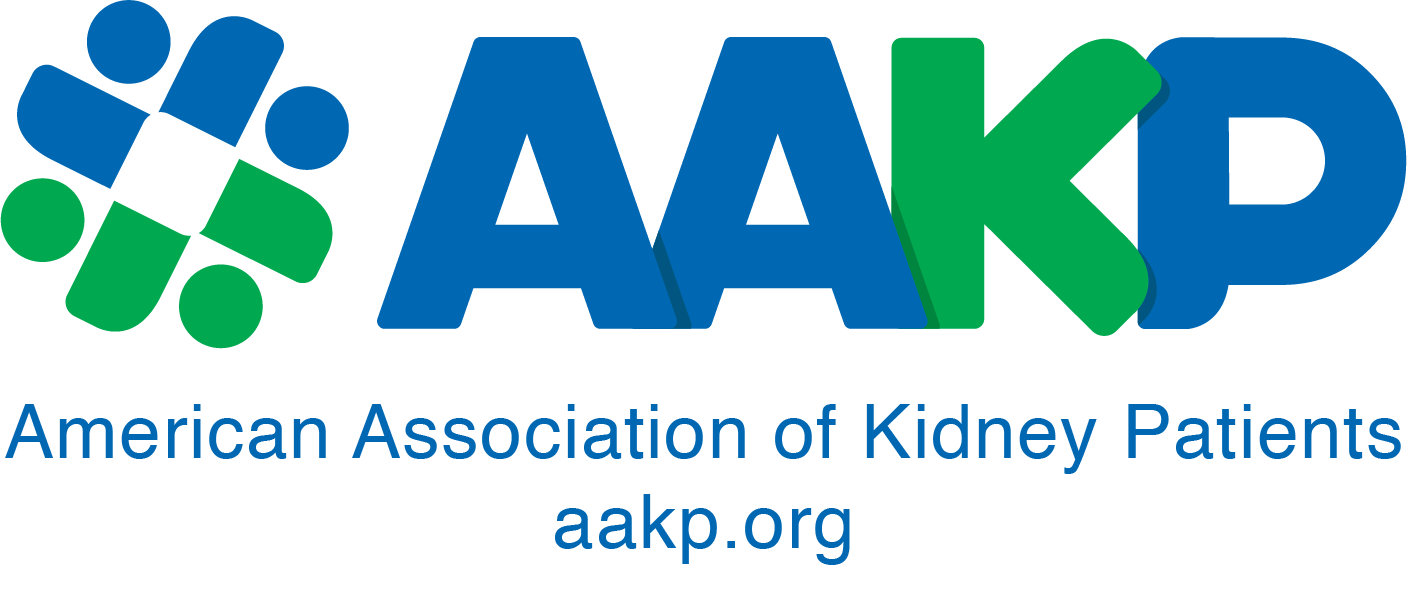For kidney disease patients, feeling tired and fatigued isn’t usually just about lack of sleep or a busy schedule. Instead, it can be a sign of anemia, a condition in which your body is not making enough healthy red blood cells. Frequently, people with kidney problems develop a type of anemia called iron deficiency anemia.1Iron deficiency anemia is caused by having too little iron in your body.
What Is Iron Deficiency Anemia & What Are the Symptoms?
We all need iron. This important mineral is a major component of the oxygen-carrying hemoglobin in your red blood cells. When your body has an iron shortage, it produces fewer or smaller red blood cells than normal, a condition called iron deficiency anemia. Iron deficiency anemia is the most common type of anemia worldwide.
Typically, people with untreated iron deficiency anemia will feel very fatigued or tired. If you remember, your red blood cells are responsible for transporting oxygen throughout the body so that your other cells can use it to function, giving you the energy you need. Because people with iron deficiency anemia aren’t making enough healthy red blood cells, the cells in their body aren’t getting enough of the oxygen they need to function well. This can affect your quality of life or even your ability to work.
Although fatigue is the most common symptom of iron deficiency anemia, other symptoms—or none at all—may also be present, depending on the extent of the condition.2Common symptoms of mild anemia include trouble concentrating, frequent headaches, or weakness. People with more severe iron deficiency anemia might have symptoms such as a blue tint to the whites of the eyes, brittle nails, fast heartbeat, light-headedness, shortness of breath, pale skin color, or a sore tongue. Some people also develop a craving for ice.3
Why Do People with Kidney Disease Develop Iron Deficiency Anemia?
Now that you better understand iron deficiency anemia and its symptoms, you may be wondering why it is common in people with kidney disease. What might surprise you is that your kidneys play a part in the making of red blood cell. Under normal circumstances, your kidneys are responsible for secreting an important hormone called erythropoietin or EPO. EPO is responsible for telling your bone marrow to make more red blood cells when blood oxygen levels are low.4When your kidneys are damaged by kidney disease, it reduces your ability to make this hormone. As a result, your bone marrow doesn’t know to make more red blood cells in response to low blood oxygen levels. This causes anemia to develop.
In chronic kidney disease (CKD), there is also another cause of anemia: having too little iron. This is due to several factors, such as: not having enough iron in your diet; blood loss (which means iron is lost, too) through hemodialysis, gastrointestinal bleeding, or frequent laboratory blood tests; 5and your body not being able to absorb enough iron to replenish the iron that is lost. This type of anemia is iron deficiency anemia, and it is common in people with CKD.
How Is Iron Deficiency Anemia Treated?
Even though it is common, iron deficiency anemia is often underdiagnosed and undertreated in patients with CKD.6, 7Treatment for IDA is very important. Not only can it make you feel better and give you more energy, but it can also slow down the progression of kidney damage. 8Anemia treatment for CKD patients often includes a type of drug called an erythropoiesis-stimulating agent (ESA). ESAs tells your bone marrow to create more red blood cells. If iron deficiency is causing or contributing to your anemia, your physician will also recommend a form of iron replacement therapy, since you cannot create healthy red blood cells without iron.
There are two main types of iron replacement products. Oral iron comes in pill, tablet, or liquid form and is usually the first-choice treatment for iron deficiency anemia. One drawback, however, can be the uncomfortable gastrointestinal side effects. While every patient is different, more than 40 percent of those who take oral iron experience side effects such as constipation, abdominal pain, diarrhea and nausea.9-11As a result, they may stop taking the medication before their iron deficiency anemia is corrected. Some patients have trouble taking iron in a pill form which delays getting healthy.
The second type of iron replacement therapy is intravenous (IV) iron. This is iron which is injected into your body rather than swallowed. This is an option for patients who can’t tolerate or absorb oral iron, or whose oral iron medication didn’t correct their iron deficiency. Some of the potential challenges of IV treatment can include lengthy infusions or multiple office visits, although the availability of newer, high-dose irons have reduced infusion times and the number of required office visits. Side effects of IV iron are generally minimal,12but include nausea, rash, and changes in blood pressure.12Some people can also have a serious allergic reaction to IV iron, which can be life-threatening or fatal in rare cases.
In addition to the treatments above, your physician is also likely to recommend making dietary changes to ensure you are eating an iron-rich diet, or taking supplements to ensure you have enough vitamin B12 and folic acid, which can assist in helping correct anemia.
Is My Treatment Working?
Your doctor or health care team will be able to tell if treatment is working by reviewing your blood tests. Both your hemoglobin (a protein in your blood that carries oxygen) and red blood cell counts, as well as the amount of ferritin (a protein that measures stored iron) and transferrin (a protein that measures the transport of iron) in your blood, will tell how good iron replacement treatment is for you. When you have enough iron in circulation and in storage in your body, your body will be able to build healthy red blood cells.
Key Takeaways
Iron deficiency anemia can be serious, but it can be treated. If you have CKD, speak with your doctor to see if you should get tested for iron deficiency anemia. If you are already being treated for iron deficiency anemia, make sure to visit your doctor so that you can be sure your treatment is working to correct your anemia.
References
1. McClellan W, Aronoff SL, Bolton WK, et al. The prevalence of anemia in patients with chronic kidney disease. Curr Med Res Opin. 2004;20(9):1501-10.
2. National Center for Biotechnology Information & US National Library of Medicine. Iron deficiency anemia. Available at: http://www.ncbi.nlm.nih.gov/pubmedhealth/ PMH0001610. Accessed January 16, 2014. Barton JC, Barton JC, Bertoli LF. Pica associated with iron deficiency or depletion: clinical and laboratory correlates in 262 non-pregnant adult outpatients. BMC Blood Disord. 2010;10:9.
3. National Kidney Foundation. Anemia and Chronic Kidney Disease: Stages 1-4. Available at: http://www.kidney.org/atoz/pdf/anemia.pdf. Accessed February 25, 2014.
4. Berns JS. Diagnosis of iron deficiency in chronic kidney disease. UpToDate. Wolters Kluwer Health: Phildelphia, PA; Updated June 3, 2013. Available at: http://www. uptodate.com/contents/diagnosis-of-iron-deficiency-in-chronic-kidney-disease. Accessed February 26, 2014.
5. Mix TC, Kazmi W, Khan S, et al. Anemia: a continuing problem following kidney transplantation. Am J Transplant. 2003;3(11):1426-33.
6. Spinowitz BS, Kausz AT, Baptista J, et al. Ferumoxytol for treating iron deficiency anemia in CKD. J Am Soc Nephrol. 2008;19(8):1599-605.
7. Gouva C, Nikolopoulos P, Ioannidis JP, Siamopoulos KC. Treating anemia early in renal failure patients slows the decline of renal function: a randomized controlled trial. Kidney Int. 2004;66:753-60.
8. Crichton RR, Danielson BG, Geisser P. Iron therapy with special emphasis on intravenous administration. 2005;UNI-MED Verlag AG.
9. Onken JE, Bregman DB, Harrington RA, et al. A multicenter, randomized, active-controlled study to investigate the efficacy and safety of intravenous ferric carboxymaltose in patients with iron deficiency anemia. Transfusion. 2014;54(2):306- 15.
10. MedlinePlus. Iron. Available at: http://www.nlm.nih.gov/medlineplus/druginfo/ natural/912.html. Accessed February 25, 2014.
11. Cleveland Clinic. Intravenous iron supplementation. Available at: http:// my.clevelandclinic.org/disorders/anemia/hic_intravenous_iron_supplementation.aspx. Accessed February 26, 2014.
Lynell D’Sylva, RN is a Senior Manager in Marketing at American Regent, Inc. She is a registered nurse with a background in the neprhology, pediatric ICU, and acute medical surgical nursing. She has been with American Regent for almost 13 years and has combined her business and nursing background to a career on educating health care professionals and patients on the importance of iron, its role, and treatment for iron deficiency anemia. Lynell was a dialysis nurse and clinic manager. She received her BSN from Rush University School of Nursing in Chicago, IL.























